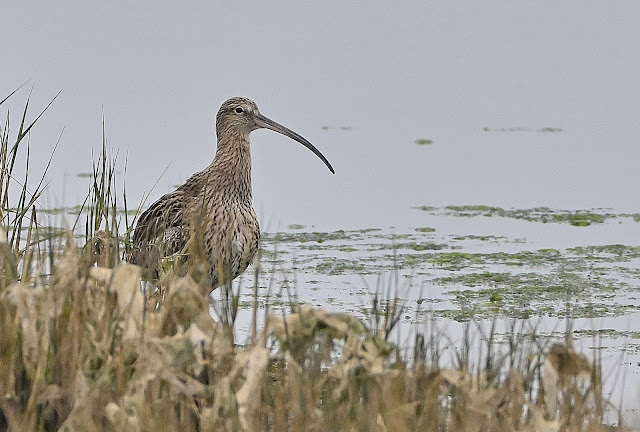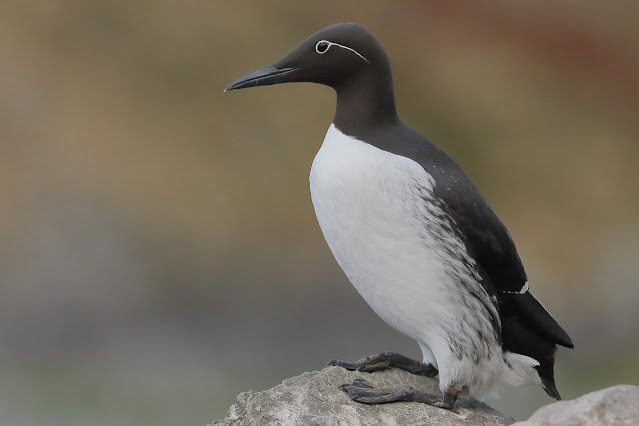Hola una vez más.
Hi again.
Hi again.
En el siguiente enlace podéis ver nuestros próximos viajes fotográficos y de observación de aves y mamíferos nacionales y al extranjero. Espero que os gusten y os animéis a venir conmigo. Una experiencia que nunca olvidareis.
In the following link you can see our next national and foreign Birds and Mammals photographic and observation trips. I hope you like them and I encourage you to come with me. An experience that you will not forget.
En esta ocasión os muestro lo que pude fotografiar en el viaje que hicimos a la Bahía de Santander y Santoña del 2 al 3 de febrero.
This time I show you what I was able to photograph on the trip we made to the Bay of Santander and Santoña from February 2 to 3.
El tiempo fue bueno pero algo peor que el que se había pronosticado pues por la tarde se nublaba.
The weather was good but a little worse than what had been predicted as it became cloudy in the afternoon. SÁBADO 2 DE FEBRERO:
SATURDAY, FEBRUARY 2:
SATURDAY, FEBRUARY 2:
Antes de llegar a la bahía de Santander, en las lagunas que hay entre esta y el aeropuerto, pudimos contemplar dos ejemplares de gaviota enana (Hydrocoloeus
minutus).
Before arriving at Santander Bay, in the lagoons between it and the airport, we were able to see two specimens ofLittle Gull.
Una bonita vista de Santander desde el puerto deportivo.
A nice view of Santander from the Marina.
Este fue el primer colimbo grande (Gavia immer) que pudimos ver.
This was the first Great
Northern Diver we were able to spot.
También pudimos ver varios colimbos chicos (Gavia stellata).
We were also able to see several Red-throated
Diver.
Me sorprendido la cantidad de alca común (Alca
torda) que pudimos ver.
I was surprised by the amount of Razorbill we were able to spot.
Un confiado andarríos chico (Actitis
hypoleucos).
A very tame Common
Sandpiper.
Ostreros euroasiáticos (Haematopus
ostralegus).
Eurasian
Oystercatchers.
Zampullín cuellinegro (Podiceps
nigricollis).
Black-necked
Grebe.
Me gusta mucho el color negruzco que tienen las gaviotas enanas (Hydrocoloeus
minutus) en la parte interior de sus alas.
I really like the blackish color that Little Gulls have on the inside of their wings.
En baja mar, todas las aves quedaban muy lejos de la costa por lo que decidimos irnos a Santoña.
At low tide, all Birds were very far from the coast so we decided to go to Santoña.
Por lo menos, en las lagunas que están cerca de las conserveras se podían ver aves más cerca. En la foto una garza real (Ardea
cinerea).
At least, in the lagoons that are near the fish canneries you could see Birds closer. In the photo a Gray Heron.
Macho de porrón europeo (Aythya
ferina).
Common
Pochard male.
Hembra.
Female.
Espátula común (Platalea
leucorodia).
Eurasian
Spoonbill.
Un macho de cerceta común (Anas
crecca).
A male of Common
Teal.
Cisne vulgar (Cygnus
olor).
Mute Swan.
Y una garceta común (Egretta
garzetta).
And a Little
Egret.
Las vistas de las barcas al atardecer estaban muy bonitas.
The views of the boats at sunset were very beautiful.
DOMINGO 3 DE FEBRERO:
SUNDAY, FEBRUARY 3:
Este día comenzamos los avistamientos en el puerto de Colindres. También me sorprendió ver muchos araos comunes (Uria
aalge) durante todo el recorrido que hicimos.
This day we began the sightings in the Harbor of Colindres. I was also surprised to see many Common Guillemot throughout the tour we made.
Gavión atlántico (Larus marinus).
Great black-backed
Gull.
Charrán patinegro (Thalasseus
sandvicensis).
Thalasseus
sandvicensis.
Había por lo menos 3 colimbos grandes (Gavia immer).
There were at least 3 Great
Northern Diver.
Luego nos dimos un paseo por la marisma. En la foto un archibebe común (Tringa
totanus).
Then we took a walk through the marsh. In the photo a Common
Redshank.
Zarapito real (Numenius
arquata).
Eurasian Curlew.
Chorlitejo grande (Charadrius
hiaticula).
Great
Ringed Plover.
Archibebe claro (Tringa nebularia).
Greenshank.
Gaviota reidora (Chroicocephalus
ridibundus).
Black-headed
Gull.
Gaviota sombría (Larus fuscus)
Lesser
Black-backed Gull.
Andarríos chico (Actitis
hypoleucos).
Common
Sandpiper.
Garceta común (Egretta
garzetta). Siempre me lama la atención el color amarillento de su garra.
Little Egret. The yellowish color of its claw always draws my eye.
Desde el mirador de Sollagua en Cicero vimos muy de lejos un gran bando de barnaclas carinegras (Branta
bernicla).
From the Sollagua viewpoint in Cicero we saw a large flock of Brent Goose very far away.
Después nos acercamos hasta la playa del Regatón para ver si andaban por allí las barnaclas carinegras (Branta
bernicla) pero no hubo suerte. Estuvieron todo el día en mitad de la bahía, lo mas alejadas de las zonas donde se las puede ver cerca.
Afterwards we went to Regatón Beach to see if the Brent Goose were around there but no luck. They spent the entire day in the middle of the bay, as far away from the areas where they can be seen close.
Vista de la playa con Santoña al fondo.
View of the beach with Santoña in the background.
Y luego miramos la playa de La Salvé de Laredo.
And then we looked at La Salvé Beach in Laredo.
En el observatorio de La Arenilla en Santoña, estaba el famoso macho de éider común (Somateria
mollissima) que lleva ya varios años en la zona.
At the La Arenilla observatory in Santoña, there was the famous male Common
Eider that has been in the area for several years.
Vimos varios somormujos lavancos (Podiceps
cristatus) opero ninguno estaba en plumaje reproductor.
We saw several Great Crested Grebes but none were in breeding plumage.
En la zona de las conserveras volvimos a ve más alcas comunes (Alca
torda).
In the cannery area we saw more Razorbills.
Y araos comunes (Uria
aalge).
And Common Guillemot.
Un grupo de espátulas comunes (Platalea
leucorodia).
A flock of Eurasian
Spoonbill.
Después de almorzar fuimos hasta el puerto de Santoña. En la foto un gavión atlántico (Larus marinus) comiéndose un pescado.
After lunch we went to Santoña Marina. In the photo a Great black-backed
Gull eating a fish.
Y este otro esperaba pacientemente a ver si le quedaba algún resto que comerse.
And this other one was waiting patiently to see if he had anything left to eat.
Zampullín cuellinegro (Podiceps
nigricollis).
Black-necked
Grebe.
El gran grupo de barnaclas carinegras (Branta
bernicla) que se negaron a ir cerca de la orilla para poder ser fotografiadas más de cerca.
The big flock of Brent Goose that refused to go near the shore in order to be photographed closely.
En el puerto pesquero de Santoña había 13 araos comunes (Uria
aalge).
In the Fishing Harbor of Santoña there were 13 Common
Murre.
Pasamos un buen rato viéndoles como se bañaban y pescaban.
We had a good time watching them bathe and fish.
Incluso se podían distinguir los que tenían bridas. Este era sin bridas.
You could even distinguish those that had flanges. This one was flangeless.
Y este otro con ellas. Fijaos en la línea blanca detrás del ojo.
And this other one with them. Look at the white line behind the eye.
Foto de archivo del viaje del año pasado a Noruega en donde se aprecia muy bien la brida al estar en plumaje reproductor.
Archive photo from last year's trip to Norway where the bridle can be seen very well when it is in breeding plumage.

Este otro sin ella.
This other one without it.
Charrán patinegro (Thalasseus
sandvicensis).
Sandwich
Tern.
Este fue el único cormorán moñudo (Phalacrocorax
aristotelis) que vimos durante el viaje.
This was the only European Shag we saw during the trip.
Después volvimos a as lagunas cercanas a las conserveras. En la foto una pareja de cercetas comunes (Anas
crecca).
Afterwards we returned to the lagoons near the canneries. In the photo a pair of Common Teal.
Cucharas comunes (Spatula
clypeata).
Northern
Shovelers.
Un bonito macho de la especie anterior.
A nice male of the previous species.
Macho de ánade friso (Anas
strepera).
Gadwall male.
Macho de porrón europeo (Aythya
ferina) con la cara manchada del barro del fondo de la laguna.
Male European Pochard with its face stained with the mud at the bottom of the lagoon.
Dos machos y una hembra de ánade rabudo (Anas acuta).
Two males and a female Northern Pintail.
Me encantan los machos de esta especie.
I love males of this species.
Zampullín común (Tachybaptus
ruficollis).
Little
Grebe.
Un bonito busardo ratonero (Buteo buteo) sobrevoló la laguna.
A beautiful Common
Buzzard flew over the lagoon.
Cercetas comunes (Anas
crecca).
Common
Teals.
Una bonita imagen de una Garza real (Ardea
cinerea).
A nice picture of a Gray Heron.
Al atardecer pasaron muchas garcillas bueyers (Bubulcus
ibis) a su dormidero
At dusk many Cattle Egrets passed to their roost.
Y con esta bonita puesta de sol, dimos por terminado nuestro viaje a Santander y Santoña.
And with this beautiful sunset, we ended our trip to Santander and Santoña.
He subido este video que Alicia Casart hizo del viaje que me ha parecido muy bonito. Gracias Alicia por dejarme compartirlo.
I have uploaded this video that Alicia Casart made of the trip that I thought was very nice. Thank you Alicia for letting me share it.
Si queréis suscribiros a este blog de los viajes que hacemos pincha en el siguiente enlace: Suscribirse y haz clic en ¿ Quieres suscribirte a nuestro blog?
If you want to subscribe to this post about the trips we do, click on the following link: Susbcribe and click on: Do you want to subscribe to our blog?
Espero que os haya gustado y hasta pronto.
I hope you like it and see you soon.
















































































No hay comentarios:
Publicar un comentario